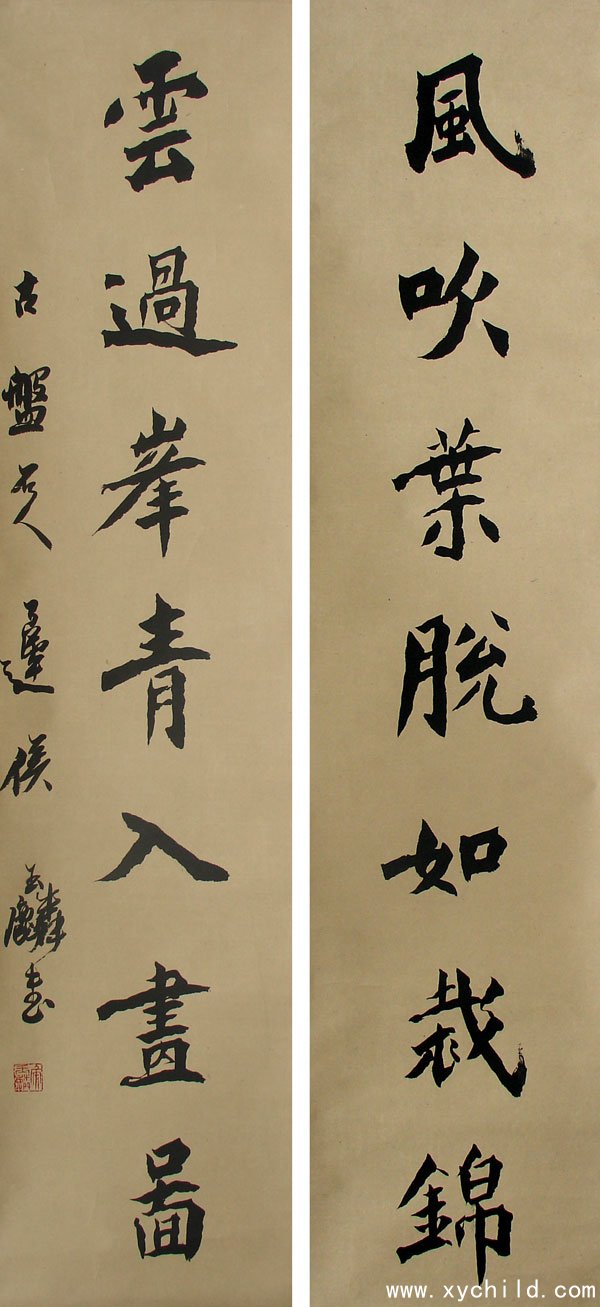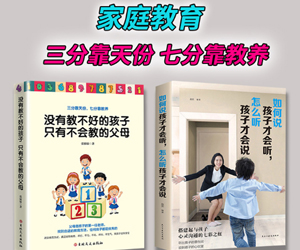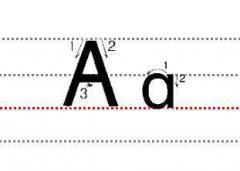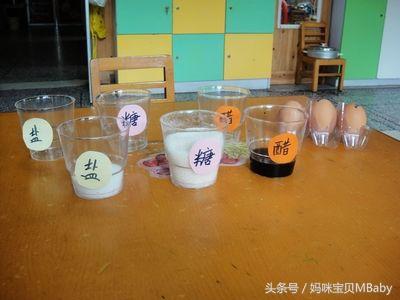对立也叫对偶、团战、排。 就是把概念相同或相反的词放在相应的位置,使它们相互映照,使句子更有韵味,增加词的表现力。 交锋犹如府中仪仗队,二人对峙。 对偶与汉魏时期的骈偶句关系密切。 可以说是从傀儡发展而来,对立本身应该也是傀儡的一种。
格律诗中对偶的具体内容,首先是上下句必须相对,其次是相对句的句型和句法结构要相同,如主谓结构等。与主谓结构相对,部分结构与部分结构相对。 互补结构与规定的互补结构等。
有些对偶的句式不一定相同,但用词一定是相对的。 再次,要求词所属的词性(part of speech)保持一致,如名词对名词、动词对动词、形容词对形容词等; 单词的“词义”也应该相同。 同名词一样,它们必须具有相同的意义范围,如天文、地理、宫殿、服装、器物、动物、植物、人体、行为、动作等相同意义范围内的词可以成对。
对偶的使用可广可严,所以有工对、邻对、广对、借对、流水对、扇对等多种形式。 从内容上看,有文字、事实、权利、反对等标题。
五言七言各四联八句。 习惯上称上联为上联,下联为颚联,第三联为颈联,第四联为尾联或端联。 上联两句和颈联两句必须对着。 如:
杜甫《七律江村》
清江环抱村落,长下江村万物幽静。 (上联)
自来馆燕,近水鸥。 (颌联)
老婆画纸下棋,孩子用针做鱼钩。 (颈关节)
很多病只需要药,微体还能求什么呢? (结束链接)
所谓对偶,就是词性、名词对名词、形容词对形容词、虚词对虚词等的对称。 所有重叠的字符也应该是对称的。 各种词性的对偶越精细,对偶就越细腻。 例如,名词可以分为以下子类别。
湖。 天文2,季节3,地理4,宫殿5,服饰6,器物7,植物8,动物9,人际关系10,人事11,身体。
格律诗的对偶一般用在中间两联,即颌联和颈联。 例如:
无题李商隐
东风细雨,芙蓉池外轻雷。
金蟾啃锁烧香,玉虎抽丝退井。
贾氏窥帘稀,芈妃留为魏王才枕。
春心不争花,一寸相思一寸灰。
颌联:金蟾斗玉虎; 啃锁VS拉丝; 烧香VS画好。
颈联:贾氏致芈妃; 窥视刘; 窗帘到枕头; 汉传给魏王; 绍到蔡)
对联可以有三联,即上联、颌联、颈联都用对联。 如:
杜甫登岳阳楼
昔闻洞庭水,今往岳阳楼。
吴楚之东南,乾坤昼夜浮。
亲友无言,老病有孤舟。
军马关北,有轩泪流。
也可以少至一联,即颌联不用对联,只对颈联。 这种情况比较少见。 还有一种情况,上联和颈联都用对联,下联不用对联。 例如:
送杜少甫为蜀州王勃
城门辅三秦,风烟望乌津。
告别大王,我俩都是太监。
海之忆知儿童学习网,天涯若邻。
无为岔路口,儿女分巾。
古人在五法七法的交锋中苦心钻研,创造了无数所谓的良偶。 在这方面,以唐代杜甫和宋代陆游为最。
五人制,
齐鲁的上联和末联不必对立。 对立面是为了整洁的形式之美。 如果四联都对了,就会显得呆板呆滞。 唐宋人的五律、七律,也有上联相互对立,不是套路。 很少见到尾联对峙。
排比是汉语的固有规律,在现代诗歌定型之前,古典作家就已经有意识地将排比用在了诗文中。 有许多古诗,为了使形式工整优美,也使用对偶,如:
杜甫五古《望岳》
戴宗夫人呢? 齐璐还年轻。
造化钟美,阴阳晓。
胸中布满层云,皆将归鸟。
会到山顶,一览众山小。
中间的两副对联也是对抗性的。 对古典诗歌不太了解的人,往往会误以为这是一首五言诗。 是不是五法,主要看和谐不和谐。 这首诗除首行“代”字偏声外,其余四字均为平声,由此可断定它绝非规诗。 另外,这首诗押韵的是斜声,不符合五韵律。 因此,现代体诗歌节奏的核心是平和,其次是配对和对抗。 唐宋一些人的格诗,中间的两联往往不对立,但只要是平调的,仍然是格诗。
一首诗的成败,主要看战事。 那么如何衡量韵文对抗的好坏呢? 创作时,不仅要注意每幅对联的词性相同和对位,还要注意两幅对联在句式上的差异,体现差异之美。 尽量避免两句一义的生硬单调的句法,对词汇变化、句型、上下义、广阔的境界和诗意、是否能激发联想等基本要求提出要求. 其中,体现凹凸不平的美感、词汇变化等元素往往容易被忽视。 如:
柳宗元《毕柳州城楼遣张、亭、冯、连泗州巡察》:
城上高楼遇旷野,海天一色愁。
狂风吹起芙蓉水,密密麻麻的雨水斜侵着多肉植物的墙。
岭树遮千里眼,江流如九回肠。
一共十万刺身来到了这片土地上,音乐和书籍停滞在一个小镇上。
这首诗的颌、颈两联,都是主谓宾句,都排成二、二、三句。 单独看战斗很顺手,但两个一起看,就显得呆板,缺乏参差不齐的美感。 解决这个问题的方法是有意地将不同句型的对联组合起来。 如五律中王勃的《杜少甫任蜀州》,颌联用的是流水对,颈联用的是劳对:
与君别,同官行。
海中有知己,天涯若比邻。
如此一来,两联各有韵律,相得益彰。
晚唐诗人李商隐“无题二首”之一的《七录中》对联的句型更是参差不齐:
梵才月坡难掩羞愧,一声不吭的车雷声离去。
曾经孤零零的,金黄漆黑,没有石榴红的消息。
下联上下句分别以“扇斩月魂”和“车走雷走”两种句型作主语,并用“羞难藏”两种主谓结构”和“语言不清晰”作为谓词。 下联上下句分别以两个虚词开头。 两副对联的用语大相径庭,并列在一起,显得十分活泼。 应注意前人词组的巧妙变化,并运用于创作实践中,克服雷同,使诗句既有工整之美,也有较参差之美。
一般来说,刚接触诗歌写作的人在对偶的使用上主要有以下不足:
A、固守陈旧的正统对抗模式,呆板死板。
B、做工和端正过多,编造晦涩难读。
C、四句一法,句式相似,单调扁平。
D. 语言修辞简单,缺乏韵味。
E、上下句之间内容重复,同体重叠,语言拘谨,诗意平淡。
律诗下颌颈两联相映成趣。 这是普遍必须遵循的规则,属于正统风格。 然而,古代法律有许多变化,例如:
[1]蜂腰格:只用颈关节对抗。 (五录多见)全诗只有一联,又称穷联。
[2]头春阁:即上联对仗,下联错,对联。 一首诗仍然有两副对联,只是一副对联的位置发生了变化。
[3]藏春阁:意思是上联和下联错了,三联和四联对了。 这些特殊的对抗形式在杜甫的诗歌中都有体现。 所以,我们在写法的时候,不要刻意求工求正,尽量用宽、对、流。
诗歌不应该片面要求正确,因为太细腻,反而会束缚心灵。 总的来说,宋词不如唐诗。 其原因之一是宋词往往比唐诗细腻。
格律诗对偶详述
说到对题的方法,无论选择什么对题形式,都要注意如何构思,如何用词、复句、造句,让诗意贯穿始终。 词义上,有择亲者,如:“悲”与“喜”、“善”与“恶”、“新”与“旧”等。恩”和“儿孝”等,还有“江风”到“海雾”、“大风”到“淋浴”、“珊瑚”到“龟甲”、“绿色草原”等亲戚。到《白云天》等等。
不过,就词性而言,还是选择相同的做一对为宜。 汉语语法中有九种词,称为“九字词”。 其中,名词、代词为实体字,其他动词、副词(形容词)、副词、介词、连词、感叹词、助词等为实体字。 也有把动词和副词包括在实词范畴的。 诗歌多为名词、代词、动词、状语,副词、介词、连词较少酬字组词,感叹词和助词更少。
对偶是指在两句对联中,句型和词性的排列是一样的。 如:名词对名词,动词对动词,副词对副词。 而其话语所形成的足迹,也应该是一样的。 单字词与单字词相对,双音节词与双音节词相对,三字词与三字词相对。 下面介绍一下前人常用的对偶,作为写诗的参考。
1、适当的动静
对联中,一句或一联是动的,另一句或一联是静的。 名句如:

①“缘在风云间,心安于日月间”。
- - 移动
②“蛇卧古洞陪鬼,风动魔珠奏醉仙”。
————静态————移动
③》鹰旋谷底寻残戟,树散崖顶守旧关。
- - 移动 - -
断壁坎坷曾梦,危楼远方常无声。 “
- - 安静的 - -
④“千里唱银玉,几家愁炭粮。
- - 移动 - -
枝叶闲鸟寂,风雷隐隐,云淡星疏,日月长。 “
- - 安静的 - -
上述各例中,一句描写动态,如“缘分在风云”、“风动神灵,奏醉仙”,而另一句则侧重于渲染的状态宁静,如“日月间心静”,“古洞蛇卧,鬼相伴”。 或一联写动态,如“雄鹰盘旋谷底寻残戟,木乱崖顶守旧关”,“狂唱银玉万千”万里数家愁炭食”,另一副联写静,如“断墙沉浮已在梦中,危楼远近常无声”,枝叶闲鸟静,风如雷,云轻星稀,日月长。” 两句两联,一动一静,可以形成有趣的对比。
2.视听变化
人类与外界接触有五种感觉,即视觉、听觉、味觉、嗅觉和触觉。 其中,最重要的视觉和听觉感官经常被用来形成对抗。 当然,也可以利用味觉、嗅觉和触觉来形成对抗。 名句如:
①“石流水溅千声清脆,云岭苍松盖一色鲜”。
————听觉————视觉
②“晴天可赏心悦目,夜雨可令和声断肠。”
————视觉————听觉
③”轻云漫融融月,远火遇昏星。
- -想象 - -
琴韵含海韵,钟声入耳风声。 “
———— 听力————
④“半夜徘徊听犬吠,独盼鸡啼。
———— 听力————
行云逗愁,踏水凌波苦叹。 “
- -想象 - -
上句写听觉意象,如“石溪万水飞溅清脆”、“雨夜和声,心碎”,另一句写视觉意象,如“云岭苍松掩整个颜色清新”和“晴天看得开心”。 或一联写听觉意象,一联写视觉意象,如“琴韵满情海韵,钟声入耳风声” ”、“半夜摇曳闻犬吠,独望鸡啼”是听觉意象,而“淡云漫融月,远火遇昏星”是听觉意象。 ,“行云逗愁,踏水凌波叹苦草”是视觉意象。 视听结合,声色对比。 除了视觉和听觉,还有其他感官错综复杂地变化形成对抗。 名句如:
⑤“酸苦同尝,清热入寒”。
与味“酸苦”、触“热凉”相反。
诗人刻意将色、声、香、味、感等不同感受交织成对,可以形成立体的感官空间,丰富了诗歌的审美内涵。
三、错综复杂的一对
古韵中的一种对偶形式,不在乎字的位置,相对的字错综复杂。
名句如:
“七贤杯中之酒,板桥之心。”
《七贤·板桥》
“杯中——笔下”
但是位置不同。
“不待金乌住云岭,而望玉龙出海。”
《金乌-玉龙》
《别等了——游盘》
但是位置不同。 这种对抗很有趣,因为变化中隐藏着秩序。
附:“倒装句”方法。
有人在错综复杂的对中编辑过,好像不太合适,应该是“倒装句”的方法。
“显金霞日,冠托玉凤山。”
这句话其实应该是:
“日展金霞佩,山上玉凤冠”。
字序颠倒后,强调彩云意象为“沛”,青峰意象为“冠”。
如:(杜甫)
“香米啄残鹦鹉粒,碧梧栖老凤枝”。
《香饭》——《鹦鹉学舌》——《啄食余粮》
《碧雾》-《凤凰》-《老枝》
杜甫《秋兴八诗》第八首有“香米啄余鹦鹉粒,碧梧栖老凤枝”。 按照字面意思,似乎难以解释。 若改成“鹦鹉啄余香米粒,凤栖碧梧老枝”,便顺理成章了。 为什么说这样的改变不是一句好话呢? 原来,杜甫的这首诗是在追忆长安风光。 他想强调北京风景的美,说那里的香米不是普通的米,而是鹦鹉啄过的剩饭; 梧桐,所以造句这样的。 是“香米——鹦鹉啄残谷,碧雾——凤凰栖老枝”,用描写句把重点放在香米和碧雾上,是一种有重点的写法。 若改为“鹦鹉啄食残米粒,凤栖老绿五指”,则成为叙事句,描述鹦鹉和凤凰的动作,侧重点完全不同。 何况按原描写句,重在香岛碧屋,所谓鹦鹉啄余,凤居旧,都是假的,不过也正说明香岛碧屋不一般。 如果换成叙事句,好像真有鹦鹉学舌、凤凰啄食,但又显得生硬。 可以说是鹦鹉啄食来解释,但是说凤凰老了显然是假的。
另一个例子:
“柳絮被打得落花连夜下雨,桃花吹去五时风。”
《长夜》-《雨打》-《残柳絮》
《五更》-《风吹过》-《桃花散》
四、连珠对
即对联中有重叠的字,也叫“重字”对联。 叠字在交锋中的位置不容忽视,应为对联之精髓。 古诗如:
1.“万木皆秋,万山只在夕阳”。
2.“江天漠漠鸟双去,风雨龙吟不时。”
3、“无边倒木沙沙作响,一望无际长江滚滚”。
4、“客门月明明,人家风凄凉”。
5.《猎松涛织谱,莺语伴甜声》。
5.字符对
名句如:
1.“黄公石三枝秀,陶陵门前五六春”。
2、“欲舞必从曹芝麻,有情必湿谢庄衣”。
对联的主轴是“字”的典故。
6.鸟兽一对
名句如:
“轩宝夜寒陆隐,离龙春暖抱朱冕。”
“黑豹”——“里弄”
“游梦随蝶散,魂逐杜鹃”。
《蝴蝶》-《布谷鸟》
诗中的对偶以“飞禽走兽”为主轴。
七、对数
这意味着将数字嵌入对联中。 数字对属于马赛克对联。 名句如:
1、“五柳为红颜知己,诸峰为伴”。
《五柳》——《竹风》
2、《突破三重险境,自救20年》。
3、“醉一千次百年无悔,一杯可消千古愁”。
4.“有时两三点就下雨,到处都是十五朵花。”
5、“一半清明一半醉,一点妩媚一点壮”。
6、“几篇文章,一个梦想,注定了三千学子的半生”。
7、“七八个走狗挤一桌,五六只小黄莺半路陪着”。
8.“酒债很常见,但在七十岁的生活中很少见。”
“普通”似乎不适合“七十”。 其实,“八尺为寻,双寻为日常”。 这样一用他义,典故得拐弯抹角来配,意料之外,也是借来的一对,常被当成一对好。
八、巧变
即句法对(即张正题所谓的“工笔对”)。
如:杜牧:
“山中鸟去鸟来,水中人吟人啼”。
九、每一句
也称为风扇到电网。 扇面展开,即句句相对。 一联中句与句不构成对联,而前联与后联构成对联,即两联对联。 如:
…………
”万千如意锦,满水云衫。
一曲清心乐,拨动天地之弦。 “
…………
”夕从出来看着粉嫩的酒窝,上上下下的倾着身子。
涟漪摇动梦境,虚实并存。 “
…………
”晶莹的泪珠从脸颊上夺眶而出,胆怯地颤抖着。
落叶凄凉,苍蝇相伴。 “
…………
”梦醒,春情早,满桌饺子。
团花秋暖,火锅蘸酱。 “
…………
“昨夜渡江难,愁往上兰;
眼下,翻山越岭,笑进长安,轻而易举。 “
…………
而唐代的绝句也采用了这种模式,比如:
“去年花下醉酒,暖日桃莺狂歌,
今江畔易离,轻烟草马频频。 “
…………
这些都是两联之间的对峙,使对峙形式新颖独特。
以上配对法也叫扇面,是诗、词、歌之间的一种对抗形式,即句句相对。 一首诗中,前联和后联形成对峙,即扇面相对。 每联的句联本身并不构成对抗。 就诗歌而言,例如唐代白居易的诗:
飘渺巫山少女,七八年前归来。
吟琴湘水曲,留于十三弦。
苦涩的语气还在冒出来,深情的咽不下去。
千云万水,夜明月明。
第一句和第三句是对的,第二句和第四句是对的。
扇面也用在诗词中,如第一部刘永的《玉蝶》:“水风淡,苹果花老;月露寒,梧桐叶黄” ,第二部电影是《很难相信有两只燕子》。 ; 指夕空,天知归航。”歌中扇面如程景初《春恋》:“小亭,燕来帘未卷。 小院里,月色空,杜鹃啼。 一句“燕子”和一句“布谷”是对面的粉丝。 也就是说,第二句和第四句是相反的。
10. 互相配对
也称为self-pair,一个句子是一个self-pair,称为句子对。 方盘求生,时时有用。
古代名言如:
“黄叶犹风雨,青楼精心编排。”
句中“风雨”自配对,“管弦乐队”自配对,“风雨”与“管弦乐队”配对,“黄叶”与“青楼”也配对。
“越过天地间流淌的河流,再无山色”。
“天地”是自对齐的,“存在”是自对齐的。
“你无情无仇,谁见你?月寒风清,风将落之时。”
“无情”与“恨”自相矛盾酬字组词,“月寒”与“风清”自相矛盾,
“阳花后桃花落,黄鸟白鸟齐飞”。
“桃花”配“阳花”,“黄鸟”配“白鸟”。
“击鼓敲钟惊海,新妆新衣照江东。”
“击鼓”与“钟声”对,“新妆”与“衣”对。
“门外青山如家,东家流入西邻”。
“门外”与“屋内”相对,“东”与“西邻”相对。
如《登高望远》:
风急天高,猿啼哀鸣,白鸟飞返清沙。
无边的倒树沙沙作响,一望无际的长江滚滚而来。
与忧郁一起流浪,一个世纪独自在舞台上生病。
艰辛恨霜鬓,新停脏酒杯。
此诗四联皆用对联,句中另有对联。 沙白”,第七句“艰难”到“苦涩仇恨”,第八句“落魄”到“心亭”,都是先自对齐在这句里,然后再对对句自对齐。有趣的是就是因为首句押韵,所以在平淡上不能完全与二句相提并论,但在意味上却是绝配。这首诗被誉为古今七韵之首,甚至如果单从形式上来说,这名声实至名归。
子都又称句对,对偶的一种。 句子中的某些词形成自对偶,称为子读。 如洪迈《容斋随笔》引李义山诗云:“茂密平阳接兰花,秦楼瓦片汉宫。蝶儿知孤凤遇鸾,三星绕三山远,紫府远碧广。” 诗中有不少是对立的,如下句秦楼对汉宫,瓦对盘; 在第五句中,蜜蜂反对蝴蝶; 第六句孤凤对离鸾等。
十一、流水对
同一副对联中的两句,形式上是两句,但意义并不对立。 事实上,整个句子被分成了两个句子。 也就是说,这两句话理解起来应该像流水一样贯穿。 它前后两句在意义上有连贯、因果、条件、转折等关系。
Ancient famous sayings such as:
1. "Wild fires are endless, and spring breeze blows and regenerates."
2. "The sky is always a guest, and when you get old, you will be stained with a towel."
3. "However, I sigh for the mortal, it is difficult to hold myself at ease."
4. "Zhi worry about riding a horse and slipping, pretending to go boating."
5. "But you will be drunk to repay the festival, and you don't have to go to complain about Luohui."
6. "Give up all your sorrow and strength, and win the joy and pity of the people."
7. "Enjoy the fun of the word Feihong, but feel ashamed and thin and bony in spring."
8. "That is to say, from Ba Gorge to Wu Gorge, then go down to Xiangyang to Luoyang."
The next sentence of the tail couplet describes the itinerary immediately following the previous sentence, which is a first-class pair.
9. "Please look at the moon on the rock, the reed flower in front of the island."
The tail joint is also a first-class water pair. The running water pair is generally considered to be a good pair. If antithesis is used in the tail couplet, the running water pair is often used to store the whole poem.
The upper and lower sentences in the couplet generally have different or opposite contents. If two sentences are completely synonymous or basically synonymous, it is called "joining palms", which is a taboo in poetry. But sometimes the upper and lower sentences are related, and they talk about the same thing. The next sentence follows the previous sentence, and the two sentences are actually one sentence. This is called "flowing water pair".
Running water pair is a kind of antithesis in modern poetry. Liu Shui Dui means that a sentence and a pair of sentences are not opposed in terms of meaning and grammatical structure, but have a relationship between the upper and lower. The two cannot be separated or reversed, but have a certain order of language structure. For example, there are two lines in Du Fu's poem "Wearing that the Lawsuit Army Received Henan and Hebei": "From Baxia to Wuxia, and then to Xiangyang to Luoyang". Then you can arrive at Luoyang from Xiangyang, the sequence cannot be reversed, and the relationship between the sentences is that the next sentence succeeds the previous sentence, and the two form a sequential complex sentence, but the words used in these two sentences form a confrontation. This kind of confrontation is like flowing water, flowing from upstream to downstream, so it is called "flowing water pair".
12. Change of tone
One sentence or one couplet uses the tone of affirmative statement, and the other sentence or one couplet uses the tone of exclamation or doubt. Famous sentences such as:
① "Everyone pities Xi Zi's appearance, who envies Confucius' practice?"
②"The shadow of the building can cover the cold clothes and socks, how can the moonlight make up half the bed?"
③"If you don't compete with flowers, why should you be pitiful?"
④ "When the flag is lowered, the sky mourns, and the ground where the head hangs still hurts.
There is no way back for Yun Miao, how can one look at the hometown when the mountains are high? “
The above declarative tone is opposite to the exclamatory tone or the affirmative tone is opposite to the interrogative tone. The ups and downs of singing and sighing in the upper and lower sentences have a well-proportioned rhythm, which effectively enhances the sentiment and charm of the poem.
Thirteen, borrow right
Borrowing pairs is a form of antithesis in modern poetry, or called false pairs. It achieves the purpose of confrontation and neatness by means of borrowing meaning or borrowing sound. They are all under the guise of a temporary interest, and many Tang people have this style.
Famous sentences such as:
1. "The cook has chicken and millet, and the child picks red bayberry."
For example, "yang" is used as "sheep" to match the word "chicken" in the sentence.
2. "The roots do not grow into the soil, and the leaves do not fall to the autumn wind."
Borrow "xia" as "summer" to match "autumn" in the next sentence.
3. "I have lived in the mountain for ten years now, and I will move tomorrow."
Borrow "qian" as "thousand" to match the word "ten" in the previous sentence.
This kind of homophonic borrowing is more common in color pairs.
4. "I came to Ge Hong's house because I was looking for a woodcutter's path."
And borrow "zi" as "purple", borrow "hong" as "red", and cut into a confrontation.
5. "I have wolfberries because I have them, so what about the chickens?"
"Goji" is the "dog" and "chicken" is the opposite.
6. "Leaves lead the waves to turn green dreams, and flowers leave the shadows of the clouds to share the breeze."
"Qing" borrows the homonym of "green" and "green"
7. "It's good to take advantage of the new poems to talk about cold and warm, so why bother to talk about male and female in a sentence."
"Jiu" borrows the homophonic word pair "old" and "new"
8. "Ma Jiaozhu sweats, Hu dances with white hooves."
"Zhu" is homonymous to "Zhu", which is opposite to "Bai".
9. "Cangming hates the decline, and Zhu Fu lives his life."
"Cang" is homonymous to "Cang" and is opposite to "Zhu".
10. "Jiaoao is upright, and Qianxu is filled with thousands of seeds."
"Jiaoao" and "Qianxu" can be directly opposite to each other, and they are homophonic "proud" and "modest", which is even rarer.
There is also the change of borrowed meaning, that is, a word has more than two meanings. The poet uses the first meaning in the poem, but at the same time borrows its second meaning to contrast with another word. It achieves the purpose of confrontation and neatness through borrowing means. 如:
11. "A bird's-eye view of Japan swallowing huge waves, whipping the desert and wrapping up the strong wind."
"Bird's eye view" here means looking down from a height, not a bird looking. But borrow the original meaning of "bird" to form a confrontation with "whip". Loan meanings are not used as much as borrowing sounds.
12. "Three visits frequently plan the world, and the two dynasties open up the hearts of veteran ministers",
The fifth word "day" and "old" are not correct. There are some couplets, which seem wrong on the surface, but actually use different meanings. Like this couplet, "Chao" uses the opposite meaning of "Chao" to "Gu", and "Xia" to "Chen" The different meanings of "xia" are used to make relatives, not their meanings in the sentence.
Borrowing is to make use of the polysemy of words to form a confrontation between a certain meaning of a word and the corresponding word, but what is used in the poem is not this meaning, but another meaning. For example, Du Fu's "Qujiang" poem: "There are common places to borrow money. Life is rare since ancient times at seventy." The word "ordinary" has multiple meanings, one is "ordinary" and the other is "eight feet to find, double to find is common". The former is a general adverb, while the latter is a quantifier. Here we use ordinary to compare the numeral "seventy" with its original quantitative meaning, but the poem uses its adverb meaning. This is the "borrowed pair". 14. False and real reflect the virtual and real: that is, one sentence writes fiction, and the other sentence is realistic. Such as the famous sentence: ① Therefore, the dream hears the remnant drum, and the long wave sends the far sail. "Gumeng" is false, and "long wave" is reality. ②The black coal cave, dense pile of bones. "Black Coal Cave" is real, and "Bone Pile" is false. ③ One mountain carries two peaks, nine waters and three slopes. "Nine waters" is false, and "one mountain carries two peaks" is real. ④ "The past is like smoke wrapping around an old tree, and the afterglow is like the moon shining on a new pool." "Wrapping an old tree" is false, and "the afterglow is like a moon shining on a new pool" is true. ⑤ "戳舻 战舻战利达,交流接风潮." "舳舻" is a real character, "Lailai" is a fictional character; "Lishe" is a fictional character, and "Fengchao" is a real character. Such a relative is called "virtual and real pair". 15. Double tones and double rhymes refer to the format of double tones to double tones, double tones to double tones, or double tones to double tones. For example: ① "Destroy the seed film in the dark and linger, steal the fruit and wander around." ② "The spring water condenses fat and makes it more beautiful, and the feathers and clothes flow colorfully and sigh." "Pampering", "lingering", "charming", "declining", "dousha" and "wasting" are all double-tone words or rhyme words, and the tones are coordinated and neat when recited. 16. In the two sentences of macro and micro, one focuses on the macro or the majority, and the other focuses on the micro or the minority. Famous sentences such as: ① "Looking at the sky from the top of the mountain, the lights sing in the dark." "High mountains" - macroscopic, "dark lights" - microscopic , "Neon" - macro ③ "You should know that the sea is wide and fish and dragons are dangerous, and don't forget your parents who are poor." Who will listen to the cold music of the wilderness." "Huawu" - microcosm, "wilderness" - above the macrocosm is the change of the macro and micro, the pen can make people have a sense of camera changes and mobilize thinking. 17. Use the reverse pull method for anti-pull pairs. If you get this couplet in the poem, it will turn stagnation into escape.Famous sentences such as: "This day the six armies were stationed together, and at that time the Qixi Festival laughed at the cows."
Add color to add color, that is, use color words to pair.
① "Since leading the yellow boy to play in Ziyuan, why will the white hair complain about Qingwei?"
②"Knowing the shady scene is difficult to reveal, how can you complain about wrongs in white clothes."
③ "Ye Cui turns the waves and utters rhymes, and the bonus leaves dreams in her beautiful face."
④ "A piece of white paper covers the sky and sun, ten thousand taels of gold builds mounds."
Nineteen, imaginary characters into pairs
The so-called virtual characters here were called Yuzhu in ancient times, and to be precise, they were called Zhuzi, because there were other sayings of virtual characters in ancient times. In modern times, they are called function words in classical Chinese, and we use them as pairs of function words. Because imaginary characters have no real meaning, it is impossible for a couplet to be all imaginary characters. The main thing is to use imaginary characters to enter the couplet. Such as the famous sentence:
① "The scenery in the lake is drunk, and the people in the painting are leisurely."
②"When the smoke and dust rise, wait for the servant to come, and if the shrimp and crab are cooked, the dog will not bark."
③ "When you enjoy the joy of learning, who will pity the teacher when you gain power?"
④ "Officials are frightened by nightmares, and civilian husbands sigh with joy."
⑤ "If you have ever been there, you know whether you are in love or not. I am not happy enough to say goodbye."
The function words in the couplet are confronted up and down, which is full of wit and wit.
Twenty, how much is clear
Two sentences in the same couplet, through the comparison of numbers, make the sentences more expressive. Here are a few examples of more and less changing verses, such as:
① "Plant a thousand seeds in spring, and harvest a few dollars in autumn."
"A Thousand Seeds" - "A Few Money"
② "The lonely moon is old by the mountains, and the flowers are new by the water."
"Lonely Moon" - "Flowers"
③"A thousand years of exclusive power becomes a barrier, and a sliver of extravagant hope is an organ."
"Thousands of years" - "a trace"
④ "Thousands of miles sing about silver and jade, and several families worry about charcoal and grain."
"Wanli" - "Several"
In the above sentence, "thousand seeds" and "several money", "flowers" and "solitary moon", "thousand years" and "a thread", "ten thousand miles" and "several families" are all formed by the changes in the number of images. A strong contrast effect to express a certain emotion of the poet.
⑤ There are meritorious deeds in a thousand swords, and there are achievements on the shoulders of Bairen.
In this couplet, the number of sentences changes, and the sentence pairs, "Qianjun" versus "One Sword", "Hundred Ren" versus "Shoulders", compete with each other to increase the connotation and power of the poem.















